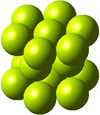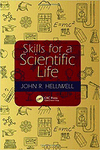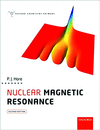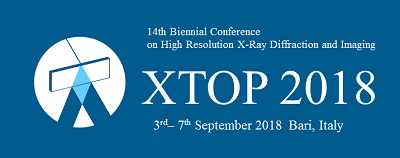issue contents
August 2017 issue

Cover illustration: Continuous diffraction of molecules and disordered molecular crystals [courtesy of Chapman et al. (2017). J. Appl. Cryst. 50, 1084-1103]; Ewald: an extended wide-angle Laue diffractometer for the Spallation Neutron Source [courtesy of Coates & Robertson (2017). J. Appl. Cryst. 50, 1174-1178]; and A novel fast Fourier transform accelerated off-grid search method for cryo-electron microscopy fitting [courtesy of Hoffmann et al. (2017). J. Appl. Cryst. 50, 1036-1047].
scientific commentaries
Free 

In a ground-breaking study published in this issue of Journal of Applied Crystallography, Chapman, Yefanov, Ayyer, White, Barty, Morgan, Mariani, Oberthuer & Pande [J. Appl. Cryst. (2017), 50, 1084–1103] describe the analysis of the intensity statistics of continuous diffraction patterns from disordered macromolecular crystals.
research papers
Open  access
access
 access
accessTo simulate the signal level of serial microcrystallography experiments at storage ring sources, data frames were collected from a large lysozyme crystal rotated about two orthogonal axes and illuminated by a dim X-ray source. Using the EMC algorithm, this study shows that three-dimensional intensity reconstruction is still feasible even without the knowledge of the crystal orientation in each data frame.
Three-dimensional (3D) printing allows one to design and easily manufacture jars for ball-milling experiments monitored in situ by X-ray powder diffraction. These jars have lower background and higher angular resolution than the standard plastic jars used for this purpose. Different designs are available for download in common 3D-printing formats.
Phase and texture formation in Cr–Al–N gradient samples is studied by X-ray diffraction, X-ray absorption spectroscopy and transport simulations of the sputter deposition process.
Decomposition of multiphase diffraction patterns with respect to residual stress is considered, taking into account the effects of elastic anisotropy.
An analogy between the crystallization process and harmonic oscillation is established. It is argued that the crystallizing system responds to the change in its energetic status according to the well known Le Châtelier–Braun principle.
The formation of δ′-ZrO in Zr-based samples was observed by in situ transmission electron microscopy during isothermal annealing. The nucleation sites, the crystal structure of the phase and its crystallographic correspondence to the α matrix were determined.
This paper presents a novel fast Fourier transform based exhaustive search method extended to off-grid translational and rotational degrees of freedom; it is applied to the cryo-electron microscopy fitting problem.
A phase refinement procedure for ab initio structure solution with heavy atoms is described.
Concurrent aggregation pathways competing with crystal nucleation deplete the concentration of soluble protein by the sequential formation of small-order oligomers and metastable clusters. Off-pathway aggregates also have positive effects on protein crystallization by favoring heterogeneous nucleation.
Open  access
access
 access
accessCalculations of intensity in grazing-incidence small-angle neutron scattering are made for colloidal structures near a solid/liquid interface.
Open  access
access
 access
accessThe FELIX algorithm for indexing snaphot images containing multiple diffraction patterns is described and its performance is tested.
Open  access
access
 access
accessThe statistics of continuous diffraction patterns are determined and used to improve analysis of the diffraction of imperfect crystals of photosystem II.
A study is presented of the X-ray focusing properties of ten conventional doubly bent crystal geometries. A general relation for sagittal and meridional image positions is derived. The characteristics of the images generated by the conventional crystal geometries on arbitrarily positioned detector planes are studied.
Download citation


Download citation


Chiral crystals of ethylenediammonium selenate are analyzed by X-ray diffraction and Mueller matrix ellipsometry, revealing an isotropic point and the associated double cone of eigendirections at 364 nm.
CCDC reference: 1552556
The development of novel hexagonal microstructure of indium monoselenide (InSe) platelet crystals grown by physical vapour deposition has been elucidated for the first time. The investigations on grain boundary morphology, energy gap and strengthening of the vapour-grown crystals which resulted from the careful control of the microstructure provide pathways to realize superior crystals for the fabrication of solar cell devices compared to their counterparts synthesized by other methods.
TiO2 nanotube (TNT) structures were grown perpendicular to fluorine-doped tin-oxide-coated glass substrates by anodic oxidation of titanium films. The morphology, crystal structure and optical properties of the TNTs were shown to be dependent on the thickness of the titanium film.
A method for accurate determination of grain-average strain/stress tensors in polycrystalline aggregates is presented and applied to characterize their evolution in a tensile-deformed Al–Mn polycrystal.
A double-crystal monochromator composed of a meridionally bent Bragg crystal and a sagittally bent Laue crystal is proposed for bi-directional focusing of high-energy X-ray beams.
Hybrid multiple diffraction has been employed to analyze r-oriented heterostructures. The study has been applied to the Zn1−xMgxO/ZnO system.
Open  access
access
 access
accessThe design of a macromolecular neutron diffractometer for the second target station of the Spallation Neutron Source is detailed.
A statistical analysis of grain boundaries (GBs) in a polycrystalline steel sheet shows that a non-negligible fraction of the analyzed GB profiles can be described by an orientation profile with a constant slope near the GB and a constant value into the grain interior. Two parameters, based on the local orientation gradient assessed by electron backscatter diffraction, are proposed: boundary effective thickness and gradient average severity.
New possibilities are presented for the characterization of superlattices by means of section diffraction topography and high-resolution diffraction.
teaching and education
Open  access
access
 access
access(3 + 1)-dimensional superspace groups are explained for incommensurately modulated macromolecular crystals with an example.
short communications
A Peltier-cooled microscope stage is described, together with its successful application to improving the diffraction quality of crystals of a multi-enzyme complex by slow cooling.
computer programs
Open  access
access
 access
accessDevelopments and improvements of the ATSAS software suite (versions 2.5–2.8) for analysis of small-angle scattering data of biological macromolecules or nanoparticles are described.
CrysTBox is a suite of four tools for automated quantitative analysis of transmission electron microscope images and two crystallographic visualization tools. The recent development of this freely available package is described.
Open  access
access
 access
accessSAXS4COLL is an interactive computer program for reduction and analysis of small-angle X-ray scattering data from fibrous collagen tissues, combining data reduction, bespoke background subtraction, semi-automated peak detection and calibration.
book reviews
Free 

Free 

Free 



 journal menu
journal menu





















































